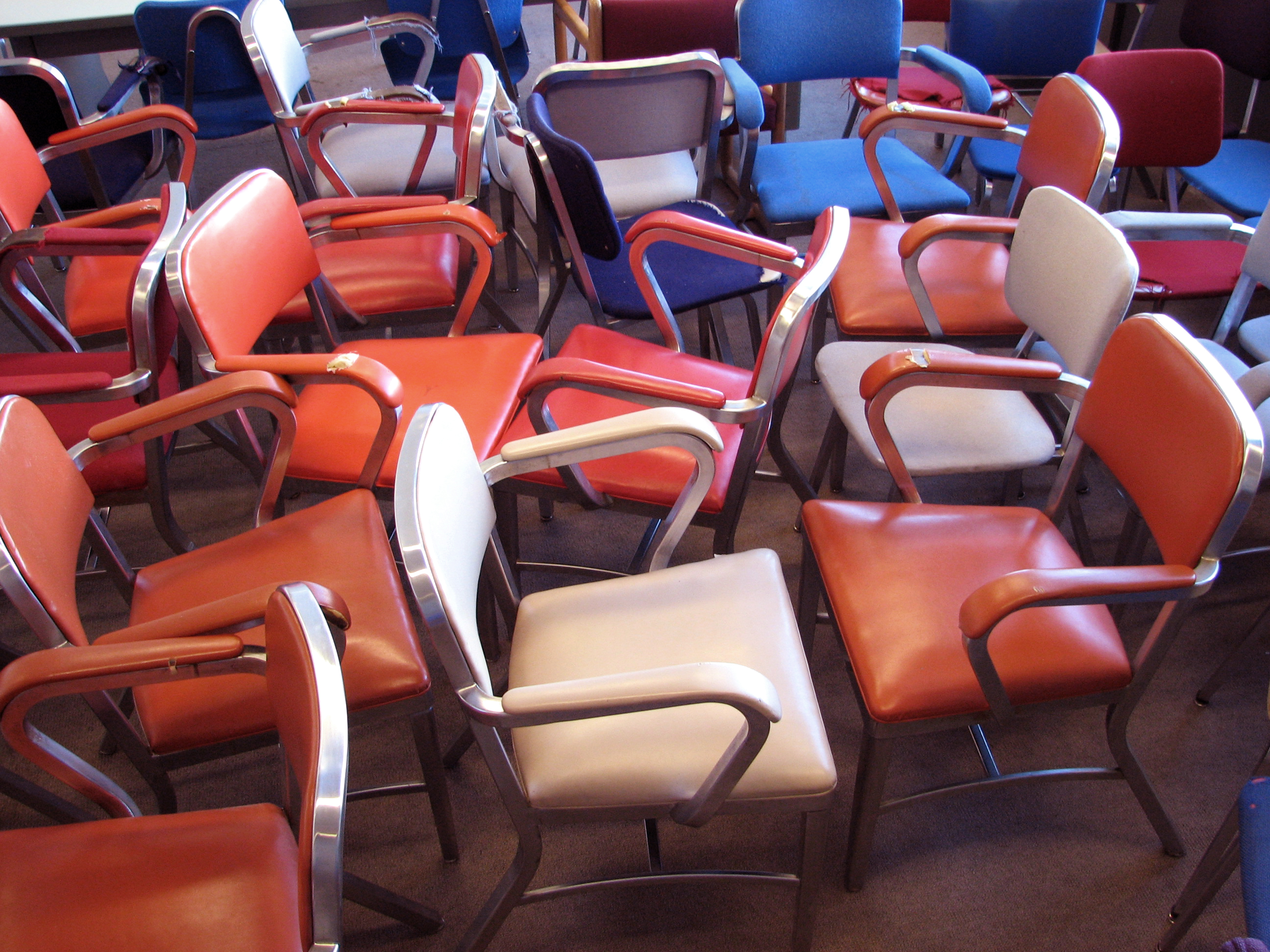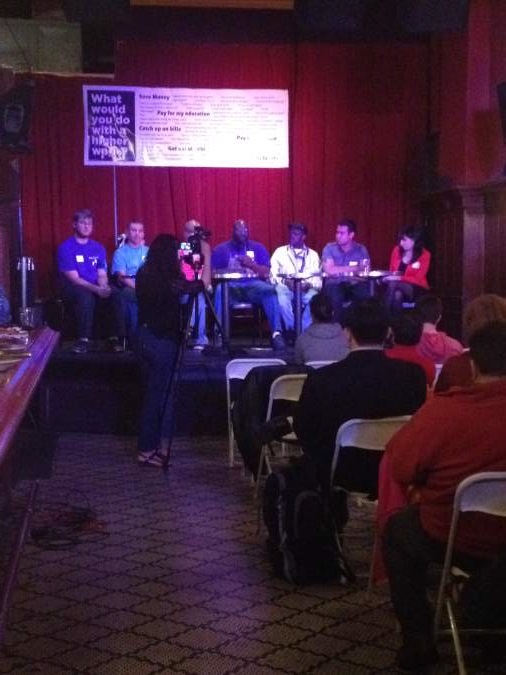There’s no room for stools at the kitchen bar of State Bird Provisions, the exceptionally popular San Francisco small plates haven that finds out next month whether it’s won the James Beard award for the nation’s best new restaurant. But there’s just enough space for two people to stand, so the restaurant treats the short stretch of ledge near the front door as no-seat seating.
Since L.A. Weekly food critic Besha Rodell and I hadn’t thought to make a State Bird reservation two or three months in advance, as the circumstances require, we tried our luck on a Monday night just before closing. The restaurant was able to accommodate us, but just barely: We were assigned to the standing bar.
We were the last prospective diners “seated”, and we’d agreed to the standing arrangement, so I don’t want to kvetch too loudly. But the two hours spent on our feet led me to wonder whether restaurants are right to maximize capacity with stand-up seats, and – perhaps more intriguingly – whether humans are really meant to eat standing up.
Stand-up eating has long been the norm in Japanese noodle shops and Spanish tapas bars, but the trend of denying seats to fine dining patrons, who presumably expect a leisurely meal, is relatively new and far from mainstream. New York’s Mile End Deli tried doing away with seats, but added stools in response to a barrage of customer complaints. Still, Grub Street last year hypothesized that the city’s diners could acclimate to the practice, just as they’ve come around on backless stools. There’s already a no-seat section at Los Angeles’ Animal.
Food tastes the same whether you’re sitting or standing, but it’s hard to feel anything but rushed and uncomfortable when you don’t have a chair. I’d wager State Bird diners who score a seat have about 35 percent more fun.
But do standing diners have the health edge? Standing has lately become a fitness sensation, with the New York Times’ Phys Ed columnist, Gretchen Reynolds, telling NPR’s Terry Gross that standing for two minutes every 20 minutes has “profound consequences.”
“If you can stand up every 20 minutes — even if you do nothing else — you change how your body responds physiologically,” Reynolds said in an avidly listened-to Fresh Air episode first broadcast last May.
Numerous studies have linked prolonged sitting to elevated risks of obesity, heart disease, diabetes and death. But Marc Hamilton, a researcher on Inactivity Physiology at Pennington Biomedical Research Center, says restaurant goers can’t yet comfort themselves with science when forced to stand for a meal’s duration.
“Inactivity physiology is too new of a field to say one way or the other if eating while not sitting is a good idea or just an insignificant option,” Hamilton says.
A 2007 study suggests eating while standing might actually pose health risks by causing eaters to consume more calories. Researchers discovered that subjects who ate out of plastic containers while standing at a kitchen counter ate 30 percent more at their next meals than subjects who were seated at two-tops. Lead author Patricia Pliner theorized that the standers didn’t feel like they’d eaten because the conditions didn’t resemble a real meal (probably not a concern at a James Beard-nominated restaurant.)
And according to Hamilton, standing up doesn’t aid digestion, although there are online claims that slumping promotes heartburn.
“Don’t forget that your guts are not going to straighten out just because you are on your feet,” he points out. “The bend at the waist is well below most of the abdominal cavity.”








